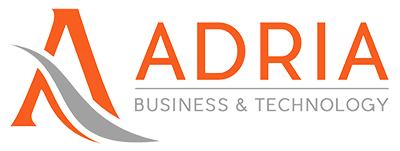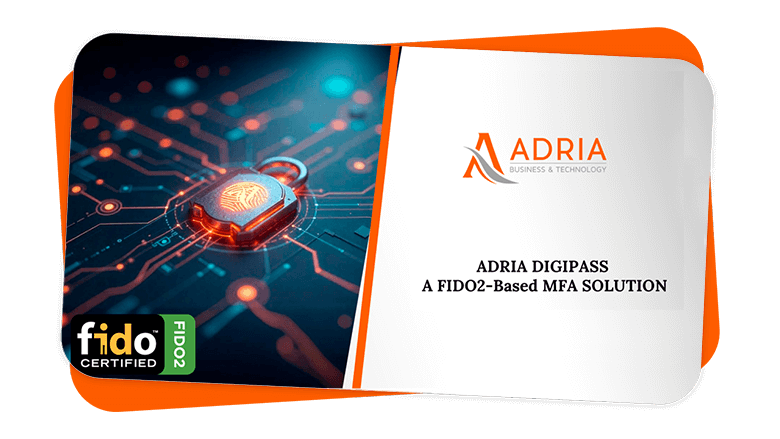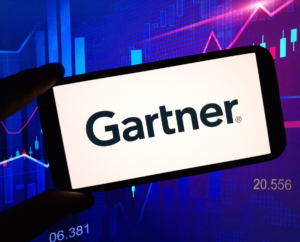Stolen credentials contribute to a large portion of breaches (e.g., 77% of hacking-related breaches involve stolen passwords), underscoring the urgent need for stronger login security.
Among the most common and effective methods of compromise is the exploitation of weak authentication mechanisms. A significant proportion of global data breaches are attributed to stolen or compromised login credentials, which are often acquired through phishing, social engineering, or brute force attacks.
Given these circumstances, it is clear that traditional methods of authentication—particularly those relying solely on usernames and passwords—are no longer sufficient. These outdated approaches are ill-equipped to meet the demands of current threats.
Organizations across sectors are now actively seeking secure, user-friendly, and scalable alternatives that can ensure robust identity verification while minimizing the friction for users. This is where Multi-Factor Authentication (MFA) comes into play, particularly solutions that go beyond conventional OTPs or SMS-based tokens.
The Limits of Traditional Authentication
Traditional authentication methods face several limitations. One significant drawback is their susceptibility to various security threats, including phishing attacks, brute-force attempts, and social engineering tactics, which can compromise user credentials.
Password-based systems are particularly vulnerable due to weak or reused passwords, making it easier for malicious actors to gain unauthorized access. Moreover, managing and remembering multiple complex passwords can be cumbersome for users, often leading to poor password hygiene practices that further weaken security.
Passwords: The Weakest Link in the Security Chain
Despite being ubiquitous, passwords are arguably one of the weakest forms of security. They are difficult for users to remember, leading many to reuse passwords across multiple services—a practice that significantly increases vulnerability. Moreover, data breaches routinely expose millions of credentials, which are then sold or traded on the dark web. Automated tools enable attackers to use these stolen credentials in credential stuffing attacks with alarming success rates.
Even when users follow best practices by creating complex and unique passwords, the risk of phishing remains. Cybercriminals often create realistic-looking login pages to trick users into entering their credentials. Once a password is exposed, it can be used to access sensitive systems and data, causing potentially devastating consequences for individuals and organizations alike.
OTPs and SMS Codes: A Temporary Solution with Long-Term Flaws
One-time passcodes, whether sent via SMS or generated through an authenticator app, were once considered a solid improvement over passwords alone. However, these methods come with their own set of vulnerabilities. SMS-based OTPs can be intercepted via SIM-swapping attacks or by compromising telecom systems. In other cases, attackers trick users into revealing their OTPs through phishing websites or social engineering.
Moreover, these methods add friction to the user experience. Waiting for an SMS or navigating to an authenticator app slows down the login process, often leading to frustration. For organizations, this can result in increased support requests and lower productivity.
The Human Element: Phishing and Social Engineering
Social engineering attacks continue to evolve and exploit the human element, often bypassing even sophisticated security measures. Phishing emails, fake websites, and malicious mobile apps all aim to deceive users into handing over access credentials or security tokens. No matter how secure a password may be, it is ultimately vulnerable if the user can be tricked into revealing it.
Usability vs. Security: The False Trade-off
Historically, organizations have had to choose between security and convenience when implementing authentication solutions. Frequent password changes, complex character requirements, and multi-step logins frustrate users and lead to workarounds—such as writing passwords down or sharing them insecurely. The result is a fragile security model that relies too heavily on human behavior.
Adria’s DIGIPASS: MFA Reinvented with FIDO2
To address these modern challenges, Adria Business & Technology has developed DIGIPASS, a next-generation Multi-Factor Authentication solution based on the FIDO2 protocol. DIGIPASS offers a secure, user-centric, and scalable authentication experience that effectively mitigates the risks associated with traditional login methods.
What is FIDO2?
FIDO2 is a set of open authentication standards developed by the FIDO Alliance and the World Wide Web Consortium (W3C). It consists of two core components:
- WebAuthn: A web-based API that allows secure registration and authentication of users using public key cryptography.
- CTAP (Client to Authenticator Protocol): Facilitates communication between browsers and external authenticators like hardware security keys or biometric devices.
FIDO2 is designed to eliminate passwords altogether by replacing them with strong, cryptographically secure login credentials that are unique to each website and stored locally on the user’s device. This results in a solution that is both phishing-resistant and inherently more secure.
How DIGIPASS Works in Practice
DIGIPASS leverages the FIDO2 standard to provide a seamless and secure login experience. During the registration phase, a user’s device—such as a smartphone or USB security key—generates a public-private key pair. The public key is shared with the authentication server, while the private key remains securely stored on the device.
When the user attempts to log in, the server issues a challenge, which is then signed using the private key. Because the private key never leaves the device, it cannot be intercepted or stolen. Authentication is typically confirmed via a biometric scan (such as a fingerprint or facial recognition) or a local device PIN, creating a strong two-factor process without requiring a password.
DIGIPASS supports a wide range of authenticators and devices, making it a highly flexible solution for organizations of all sizes. Its passwordless nature means users can enjoy a streamlined experience, while IT teams benefit from reduced support tickets and increased system security.
The Benefits of DIGIPASS
Enhanced Security That’s Built-In
With DIGIPASS, organizations gain access to one of the most secure authentication methods available. Since no shared secrets are transmitted during authentication, the risk of phishing, replay attacks, and credential theft is significantly reduced. Each authentication request is cryptographically unique, ensuring that even if a transaction is intercepted, it cannot be reused or reverse-engineered.
A Truly Passwordless Experience
By eliminating passwords, DIGIPASS removes one of the most vulnerable components of traditional authentication systems. Users no longer need to remember, manage, or reset passwords. Instead, access is granted via fast and intuitive actions—such as tapping a security key or completing a biometric scan. This not only improves the user experience but also reduces the burden on IT departments.
Compliance with International Standards
DIGIPASS is FIDO2 Certified and built in accordance with global regulations and security frameworks. It supports compliance with the General Data Protection Regulation (GDPR), the Payment Services Directive (PSD2), and other data protection laws. Its architecture aligns with privacy-by-design principles, ensuring minimal data exposure and robust access controls.
Scalable, Flexible, and Future-Proof
DIGIPASS is designed to integrate easily with existing systems, applications, and infrastructure. It supports major browsers and platforms, works with a variety of authenticators, and scales effortlessly from small businesses to large enterprises. Its reliance on open standards ensures long-term compatibility and future-readiness, even as authentication technology evolves.
Use Cases Across Industries
Financial Services and Banking
Financial institutions are prime targets for cyberattacks due to the high value of their data and transactions. DIGIPASS helps banks and fintechs meet regulatory requirements such as PSD2, while offering customers a secure and convenient way to access services. From logging into online banking portals to approving high-value transactions, DIGIPASS provides unmatched security without compromising usability.
Government and Public Administration
Governments and public sector organizations must protect sensitive data while maintaining accessibility for both citizens and employees. DIGIPASS facilitates secure access to citizen portals, tax services, and internal systems. Its phishing resistance and compliance with GDPR make it an ideal solution for agencies looking to modernize their identity and access management infrastructure.
Healthcare and Medical Services
Hospitals and healthcare providers handle vast amounts of confidential data. DIGIPASS ensures that only authorized personnel can access electronic health records (EHRs), while patients can securely interact with online health services. Its biometric capabilities allow fast, hygienic, and secure access in clinical environments.
Corporate Enterprises and SMEs
Organizations of all sizes face security challenges, especially with the shift to remote work. DIGIPASS enables secure, scalable authentication for employees accessing company resources from various locations. With support for Single Sign-On (SSO) and integration into enterprise IT ecosystems, it streamlines identity management while reducing risk.
Why Choose DIGIPASS by Adria?
DIGIPASS is not just another security tool—it is a forward-thinking solution designed for organizations seeking to future-proof their cybersecurity posture. Created by Adria Business & Technology, a recognized leader in digital transformation, DIGIPASS reflects the company’s dedication to delivering secure, innovative, and user-centric solutions that meet the needs of modern enterprises.
Whether you are looking to reduce your organization’s attack surface, simplify authentication processes, or ensure compliance with evolving regulations, DIGIPASS offers a clear path forward.
To Conclude
Adria’s DIGIPASS, built on the powerful FIDO2 framework, offers a transformative approach to identity security—one that eliminates passwords, enhances protection, and prioritizes usability.
Whether you’re a bank safeguarding financial transactions, a government agency modernizing citizen services, a hospital protecting patient data, or a business enabling remote work, DIGIPASS can help you stay secure and competitive.
References
FIDO Alliance. (n.d.). About FIDO2: Overview. https://fidoalliance.org/fido2/
FIDO Alliance. (n.d.). FIDO Certified Products. https://fidoalliance.org/certification/fido-certified-products/
World Wide Web Consortium (W3C). (2019). Web Authentication: An API for accessing Public Key Credentials Level 1. https://www.w3.org/TR/webauthn/
European Union. (2016). General Data Protection Regulation (GDPR). https://eur-lex.europa.eu/eli/reg/2016/679/oj
Adria Business & Technology. (n.d.). DIGIPASS Multi-Factor Authentication Solution. https://adria-bt.com/en/adria-business-technology-obtient-la-certification-fido2-server-pour-sa-solution-adria-digipass/
Adria Business & Technology. (n.d.). Company LinkedIn Page. https://www.linkedin.com/company/adria-business-&-technology/







